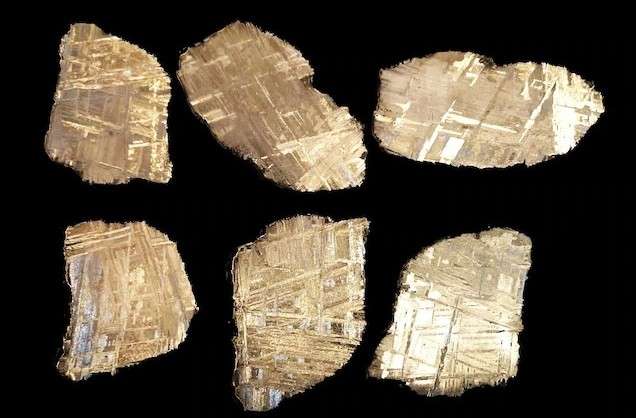These Flabby Gel Robots Could Deliver Life-Saving Drugs by Inching Along Using Changes in Temperature
Made of water-based gel, a robot inchworm moves along as the gel expands and contracts from changes in temperature.

In 2019, prospectors found a meteorite in Somalia while looking for opal which has now revealed three never-before-seen minerals that originated off-Earth.
Since minerals are a little like recipes, their formation can inform us as to the history of their making, and these are no exception; with scientists positing that they came from the surface of a planetary body near to a location that was struck by an ultra-fast impact which turned the rocks and metal nearby into liquid.
The El Ali meteorite is the ninth-largest ever found. Located near a watering hole in Somalia, generations of herders have made use of its high metallic content to sharpen their blades.
It was then moved to China for a potential sale, but before that samples were sent to Chris Herd, curator of the meteorite collection at the University of Alberta, who found 3 minerals with formationary patterns unknown from Earth's processes.
Scientists have identified 5,800 minerals on our planet, and 480 that have come from elsewhere; 30% of which don't form naturally on Earth.
Rather than being baked into the rock, the new minerals were formed in microscopic depressions around the surface of highly-metallic asteroids called inclusions.
Herd's hypothesis for the formation of the new minerals, which he named elaliite, for the location, and elkinstantonite and olsenite after two other scientists from the field, is that when molten metal is cooling down, different minerals solidify at different times.
Configurations that are easier to make chemically or because the right components are nearby form first, pushing still-liquid leftovers into a dwindling puddle of incompatible components, which eventually cool themselves to form the inclusions, and stranger mineral configurations.
Herd believes this is less likely to have taken place in the center of an iron meteorite, than on the surface of a planetary body that was struck by an iron meteorite. At greater than 11,000 miles per hour, the collision would melt the rock, giving rise to the phenomenon of the inclusions.
Herd told National Geographic that studying the formation of minerals, particularly in meteorites, is a little like "armchair solar system exploration," because it necessitates re-reading the recipes that made them.
SHARE This Fascinating Phenomenon With Your Friends…
Be the first to comment